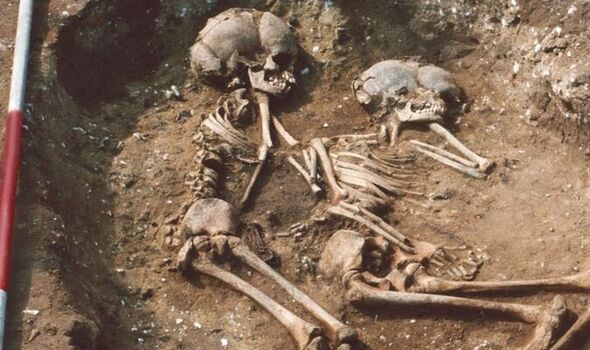
The unveiling of a groundbreaking archaeological discovery has rewritten the narrative of early English history, challenging long-standing assumptions about the homogeneity of its origins. In a monumental DNA analysis project spanning 460 individuals buried between 200 AD and 1300 AD, researchers delved into the genetic tapestry of England, unraveling tales of migration, diversity, and unexpected connections.
Contrary to previous beliefs that English ancestry originated solely from northern European regions such as Germany, Denmark, and the Netherlands, the study revealed a surprising twist. Among the analyzed remains, one individual stood out with a genetic link to West Africa. This revelation shattered preconceptions, dismissing theories that early English ancestors were confined to small elite groups.
Published in Current Archaeology, the project led by Professor Duncan Sayer from the University of Central Lancashire emerged as one of Europe’s largest ancient DNA initiatives. Sayer emphasized the importance of challenging perceptions and understanding ancient England as a dynamic landscape shaped by migration.
The research not only highlighted significant population changes across England during the Middle Ages but also unveiled poignant individual stories. One such narrative centered around a young girl, known as “Updown girl,” buried in 7th Century Kent. Despite her distinct West African ancestry, the burial goods accompanying her—pot, bone comb, knife, and spoon—suggested equal treatment in death, challenging societal norms of the time.
The analysis indicated that 33 percent of her DNA traced back to West African roots, resembling Esan or Yoruba groups. This unexpected revelation brought to light the intricacies of ancient family relationships and the acceptance of diverse ancestries within communities.
The story extended to two women buried near “Updown girl,” identified as her great aunts. Belonging to Northern European descent, they shared similar burial practices, adorned with belt hanging sets, beads, knives, combs, and spoons, portraying an affluent family.
Further exploration of the remains led to West Heslerton, where a teenage boy, with 100 percent Northern European ancestry, was buried with a Scandinavian-origin armed brooch. Meanwhile, near RAF Lakenheath, a double grave held two adolescents, a 15-year-old boy buried with a knife and buckle, alongside a 12-year-old girl. Mitochondrial DNA analysis revealed they were first-degree relatives, an older brother and younger sister, buried simultaneously.
Professor Sayer emphasized the significance of the macro and personal stories revealed by the project. The comprehensive DNA analysis painted a complex picture of migration events, interwoven with individual and familial adaptations across different regions of Britain. The resulting tapestry encapsulated the rich and multifaceted history of England’s past, challenging and reshaping historical narratives.
RELATED ARTICLES
- Researchers Warn Vaping is just as Harmful as Cigarettes
- EVs pollute 1850 times more than Fossil Fuel cars according to new study
- UK Warns that China is Preparing for Total Nuclear War with the West
- Jacob Rothschild Dies At Age 87
- UK Government-Funded Study Found Virtually No Dental Benefit From Fluoridation











